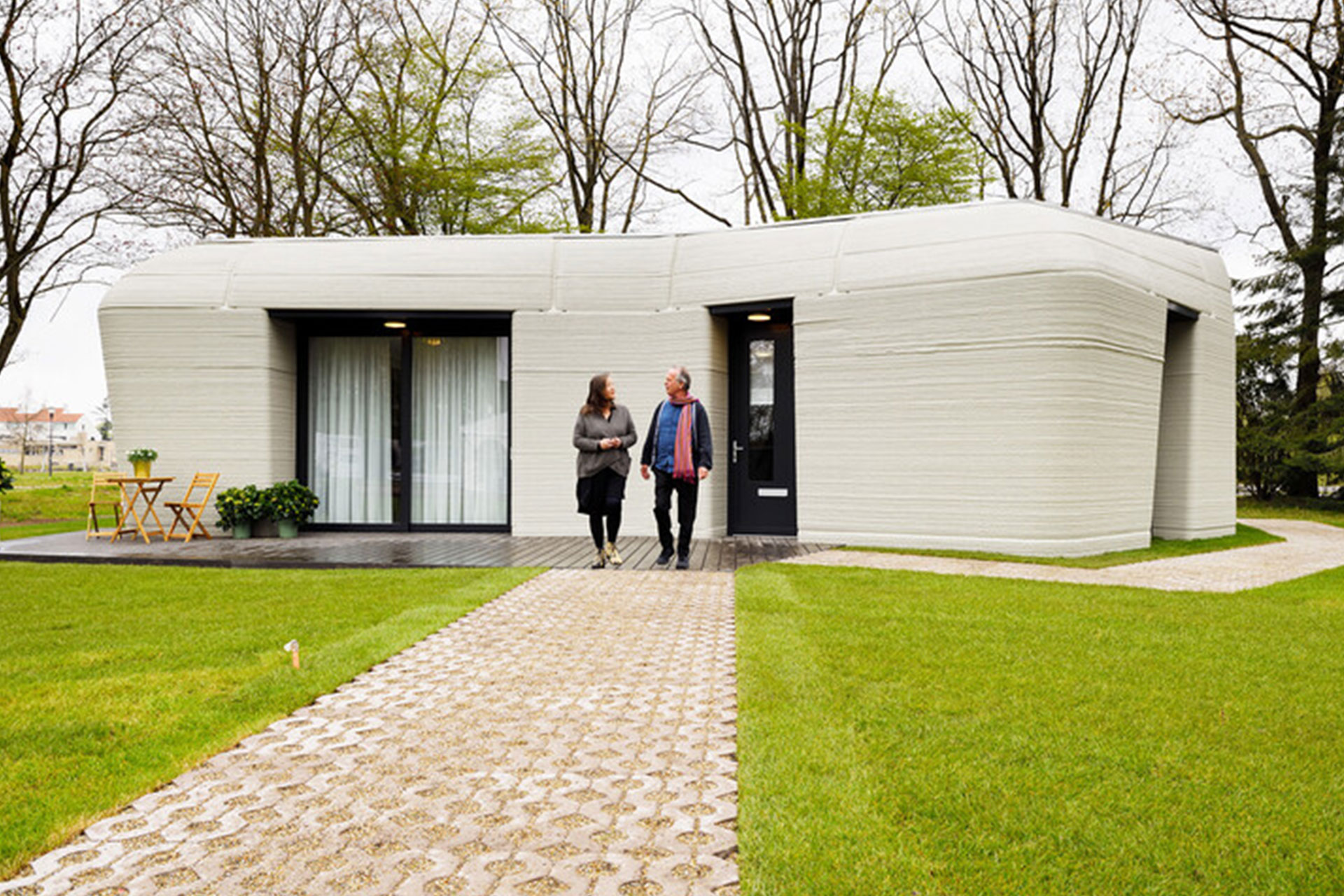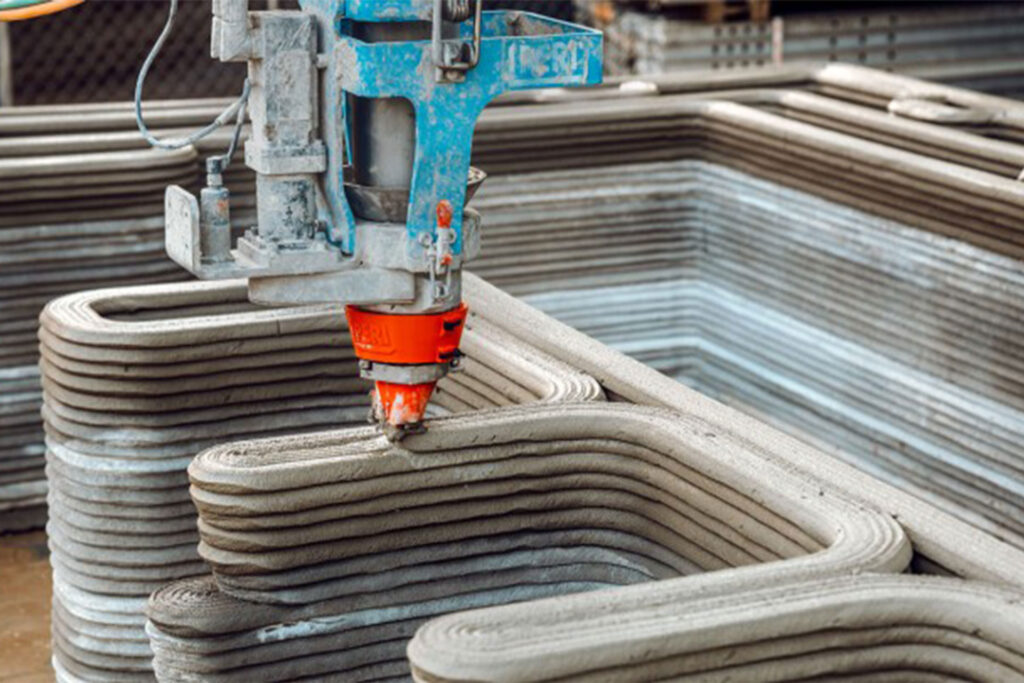Sustainable Living: How 3D Printed Houses Promote Eco-Friendly Architecture

In recent years, sustainable living has gained significant momentum as individuals and communities strive to reduce their ecological footprint. One remarkable innovation revolutionizing the field of eco-friendly architecture is 3D printed houses. This groundbreaking technology has the potential to transform the construction industry by offering efficient, cost-effective, and environmentally friendly solutions.
Related: 3D Printing in Construction: The Advantages and Disadvantages
What is a 3D Printed House?

A 3D printed house is a structure built using 3D printing technology, where layers of construction-grade materials are precisely deposited by a large-scale printer. This innovative method reduces material waste, promotes energy efficiency, and offers design flexibility. The materials used can include concrete, polymers, and recycled plastics.
While certain elements like windows and doors may still require traditional construction methods, they are advancing sustainability in the construction industry and enabling faster, more affordable, and customizable housing solutions, promoting an eco-friendly architecture and sustainable living through 3D printed houses.
Now, let’s explore the concept of 3D printed houses and go through how they promote sustainable living. So sit back and read on!
Reduces Material Waste
Traditional construction methods often generate substantial waste due to inaccuracies in measurements and the need for excess materials. However, 3D printed houses can significantly minimize material waste by precisely depositing materials layer by layer based on a predetermined design. The automated nature of 3D printing ensures that the exact amount of material required is used, reducing waste and preserving natural resources.
Encourages Energy Efficiency
Sustainable architecture aims to minimize energy consumption and promote efficient resource utilization. 3D printed houses excel in this aspect as well. These houses can be designed with energy-efficient features such as optimized insulation, passive solar heating, and natural ventilation. By incorporating these elements into the design and utilizing the benefits of 3D printing technology, energy requirements for heating, cooling, and lighting can be significantly reduced, leading to long-term energy savings and reduced environmental impact.
Reduces Carbon Footprint
One of the most significant advantages of 3D printed houses is their reduced carbon footprint. Compared to traditional construction methods that rely on transportation and intensive energy usage, 3D printing can be done on-site, minimizing the need for transportation of construction materials and reducing associated emissions.
Additionally, 3D printed houses can be constructed using sustainable and eco-friendly materials, such as recycled plastics or bio-based materials, which helps lessen their environmental impact.
Provides Affordable Housing Solutions
Addressing the global housing crisis while promoting sustainability is a pressing challenge. 3D printed houses offer a potential solution by providing affordable housing options. The streamlined construction process and reduced labor costs associated with 3D printing can make housing more accessible to those in need. Through the use of local and sustainable materials, 3D printed houses can be built in economically disadvantaged areas, aiding in uplifting communities while minimizing environmental harm.
Encourages Design Freedom and Adaptability
3D printing technology provides architects and designers with unparalleled freedom in creating unique and innovative structures. The versatility of 3D printing enables the construction of complex geometries and customized designs that may not be possible with traditional construction methods. This flexibility enables architects to optimize building shapes for energy efficiency and adapt structures to the natural surroundings, seamlessly integrating with the environment.
Faster Construction Time
With the capability of 3D printing technology to produce even the most complex parts and designs at a faster time, it is a no-brainer that 3D printed houses harbor this benefit. Unlike traditional construction projects which can take months or even years to complete, 3D printed houses can be built in a fraction of the time, thanks to the automated and precise nature of the printing process.
Furthermore, traditional construction projects may also cause disruptions and environmental disturbances, while the construction process of 3D printed houses helps minimize the impact on the surrounding environment and allows for quicker occupancy, enabling individuals and communities to settle into sustainable homes.
Promotes Research and Development
The advancement of 3D printed houses promotes ongoing research and development in sustainable architecture and construction. Architects, engineers, and scientists are continually exploring new techniques, materials, and designs to further improve the efficiency, durability, and environmental performance of 3D printed structures. This innovation not only benefits the construction industry, but also encourages interdisciplinary collaboration and the exchange of knowledge to advance sustainable living practices.
Pushes for Localized Production and Resilience
The decentralized nature of 3D printing allows for localized production, reducing the reliance on centralized manufacturing and long-distance transportation. This localization encourages the resilience of communities, particularly in remote or disaster-prone areas, as 3D printed houses can be constructed using locally available materials and resources. By promoting self-sufficiency and reducing dependence on external supply chains, 3D printed houses contribute to sustainable living and community resilience.
As we strive to create a sustainable future, 3D printed houses are emerging as a promising solution that aligns with eco-friendly architecture principles. However, we cannot also discredit the possible challenges that come with it, such as scalability and regulatory frameworks. The good news is that the potential of 3D printed houses to transform the construction industry and promote sustainable living cannot be overlooked. With further advancements and widespread adoption, we may witness a future where eco-friendly architecture and sustainable living through 3D printed houses are largely used around the world.
Would you like to know more about 3D-printed houses in the Philippines? Contact us today, we’d love to help you!


 3D Printing
3D Printing  CNC Lathe
CNC Lathe  Desktop Filament Making
Desktop Filament Making  3D Scanning
3D Scanning  CNC Milling
CNC Milling  Packaging & Labeling
Packaging & Labeling  Bandsaw Cutting
Bandsaw Cutting  CNC Router
CNC Router  Vacuum Forming
Vacuum Forming  CNC Industrial
CNC Industrial  CNC Surface Grinding
CNC Surface Grinding  Waterjet Cutter
Waterjet Cutter 















